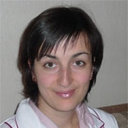[New approaches to the treatment of chronic daily headache].
Palabras clave
Abstracto
Two groups of patients with chronic daily headache have been treated: 16 patients of the first group received katadolon (flupirtin) in dose 300 mg per day during 2 months as an alternative analgesics instead of combined sedative drugs (sedalgin, pentalgin, citramon) that patients abused for many years. The withdrawal period was painless, the use of katadolon resulted in the reduction of attack frequency and the decrease in the amount of traditional analgesics. Katadolon was well tolerated, only two patients reported the total weakness and 1 patient reported diarrhea. Velafax (venlafaxine) in dose 75 mg per day was prescribed to 18 patients of the 2nd group during 6 weeks. The treatment resulted in the decrease of attack frequency and pain intensity. Velafax reduced allodynia which was studied using algometria and touches, and wind-up phenomenon. There was the significant increase of the R3 component of nociceptive blink reflex threshold and pain threshold of nociceptive flexor reflex that indicates the augmentation of antinociceptive protection and decrease in the sensitization of central nociceptive neurons of the trigeminal nerve. Patients treated with Velafax experienced nausea, constipation, impairment of sustained attention, decrease of appetite however these side-effects were mild and passed without treatment during 5-7 days.



